Brand brief: how to write one and get great results every time (free template included)


The work’s only ever as good as the brief 💡
You’ve probably heard this one a million times but, you know what? It’s true.
Brand ‘brief’ however doesn’t do this bible-sized document justice. Because when it comes to outlining the ins and outs of your brand’s ‘look and feel’, it has to be just as informative as it is inspiring.
Sound like a lot? Don’t worry, we’ve got you covered 😉.
Whether you’re assembling the puzzle pieces of your very first start-up or polishing existing assets as part of a rebrand, here’s how to write a brand brief that gets you the desired results from your team or design agency - every single time.
Let’s start with clearing up any queries first of all…
Essentially, a brand brief (not to be confused with a creative brief) is a comprehensive document that outlines exactly what your brand is - or what it’s looking to be. It includes your overarching vision, goals and purpose as a business. And the more detailed the brief, the easier it is for any outside branding agency or internal stakeholders to understand what you’re about. This allows them to develop and communicate your brand’s style - be that visually or verbally - with clarity and consistency.
Here’s a list of 11 elements every brand brief should contain.
If you’re starting out, you might not have all of the following information and strategic thinking at your disposal.
That’s OK.
Because we’ve explained every conceivable detail you need (below) to get you started and steer you in the right direction.
The business, your objectives and goals
Your vision statement
Your mission statement
Your target audience
Competitor analysis
Aspirational brands
Your brand’s promise: what do your customers deserve?
Your brand’s proposition: how are you unique?
Your brand’s premise: what’s your brand’s story?
Your brand’s persona: what archetype character is your brand?
Tone of voice
Project specifications
First things first, start your brand brief with a short overview of your business and then go on to outline your objectives and goals 🎯.
Obviously, your business’ overview will be easier if your brand already exists, but if not imagine you're writing an elevator pitch; can you get the most important points across in 75 words or less?
Objectives tend to be a little easier to write. The most popular reasons for a branding project are:
Acquiring or merging with another company
Changing markets, products or core proposition
Having an outdated image
New leadership changing the company’s direction
Poor reputation
Rapid growth or expansion
Your goals are your achievable outcomes from your objectives. These may be:
Increase sales by 20%
Become the leading brand in your sector
Or gain a regular flow of new clients
If things have gone wrong with a branding project before, be sure to include them here in the first section. This ensures design teams and agencies don’t waste time making the same mistakes again. After all, we want them to nail your brief as efficiently as possible. But do make sure your main focus is on where you want to be.
This leads us to our next point.
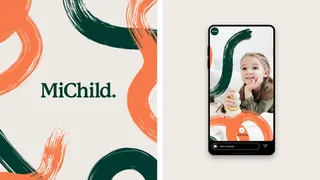
MiChild by MadeByShape
Your vision statement for your business and brand clearly sets out your plans for success - usually for the next 5-10 years.
Short and succinct, roughly around 35 words or so, it motivates employees towards a shared goal. Not only that, it completely encapsulates what you’re all about.
Getting to the heart of your vision can be achieved by asking yourself the following questions:
1) What is your core focus?
2) What is your unique ability? What is your differentiator?
3) Who, What, or Where does your company want to be in five to ten years?
4) What is your one year target to move the needle towards the vision?
For example, LinkedIn’s vision is:
“To create economic opportunity for every member of the global workforce.”
It is important, however, not to get your vision statement mixed up with your mission statement. They are two separate things. Let’s tackle that next.
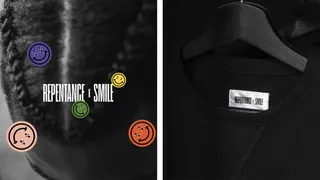
Repentence x Smile by MadeByShape
If your vision is focused on where you’re going, the mission hones in on how you’re going to get there.
Again, using LinkedIn as an example, its mission focuses on the how and is simply:
“To connect the world's professionals to make them more productive and successful.”
OK, but how do you get there?
Well, according to Sarah Aboulhosn at Sprout Social, asking the following questions is a good place to start:
In what ways does your brand add value to its audience?
What is the larger impact you want to achieve by offering this help?
Are these goals attainable and realistic?
Can the brand embody this mission in every aspect of the organisation?
And these days, perhaps more than ever, it’s important to stand for something.
“Today, people are looking more closely at which brands align with their values. Consumers are becoming more critical of which brands they advocate for,” argues Sarah Abhoulson.
In fact, Zeno Group’s 2020 Strength of Purpose study of over 8,000 individuals revealed that when consumers think a brand has a strong purpose, they are:
4 times more likely to purchase from the company
6 times more likely to defend the company in the event of a misstep or public criticism
4.5 times more likely to champion the company and recommend it to friends and family
4.1 times more likely to trust the company
Makes sense, right? After all, we usually want to associate with genuine people in our lives - why should the brands we follow be any different?
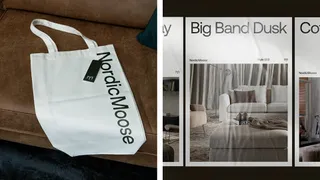
Nordic Moose by MadeByShape
If you’re an existing brand, you may have some of this thinking in-house already. Possibly as content or user personas. Don’t worry if not, though. You can create a target audience profile in five simple steps:
Try and describe your ideal customer
Go deeper into demographics, e.g. age, income, education and employment
What are their interests and some of the brands they’re likely to follow?
Identify their different needs and pain points
Briefly describe where they’re likely to find you, e.g. Google, Instagram, etc.
Getting as much customer insight into the brief as possible helps to ensure your brand measures up with your prospects wants and desires.
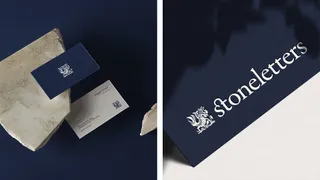
Stoneletters by MadeByShape
Understanding your competitor landscape is crucial for building or rebranding a business. After all, how can you create a sense of distinction if you don’t know what else is out there?
Follow these three steps to complete an analysis of your competitors:
List and describe your main competitors - these could be a mix of actual threats and more aspirational brands. What do you like/dislike about them?
Highlight their unique value proposition (UVP) - what makes them stand out from the crowd? Do they communicate this succinctly?
Identify strengths, weaknesses and opportunities - some may be more competitive on price, whilst others have a broader product offering.
Content analysis - take a deep dive into their creative assets. What’s the tone like on their blog? What social channels are they on and do they have a consistent style across their campaigns?
Passing on this information to an agency can help them in a number of ways. A designer would look at your competitors and think about colour palettes and font choices. Orange might signal budget in the airline space but not necessarily in other markets.
On the other hand, a copywriter would hone in on the content analysis, looking at how your core competitors communicate. Are they familiar with their customers or a bit more formal?
All this information helps to shape a brand that feels like you (and no one else).
Sometimes, you may have a general idea of where you’d like to take your brand visually - this is great information for us to have (Even if we may not agree 😉) and can be great to understand what your vision is from a visual point of view. Equally, if you have no idea, this is absolutely OK. That’s our job.
Looking at aspirational brands is not limited to competitors or even brands that operate in your specific industry. You may already have a list of brands or visuals you aspire to. Give a few examples of brands that you like and explain why, try to describe specific elements, for example:
Colour scheme and why
Tone of voice (we talk about this further down in this article)
Typography
Photography Techniques
Illustration Styles
Go in as much detail as you like, we like detail 😍. We want to know all about your branding inspiration.
There are four Ps you should always include when writing the perfect brand brief: promise, proposition, premise and persona.
Let’s start with, promise ❤️.
Much like pledging your allegiance to a friend, your brand promise to customers can’t be empty. It has to mean something.
Your promise isn’t a strap or tagline either; instead, it’s what your customers should receive every time they buy from or interact with your brand. And the more your brand can deliver on its promise, the more meaningful your connection with them becomes over time.
But you can’t promise the world.
In fact, that’s where some brands come unstuck.
For example, Oatly promise that its “...drive to help people enhance their lives and contribute to the long-term future of the planet will always come before the reckless pursuit of profit.”
However, customers took to social media in 2020 to denounce the brand following allegations that one of its key investors was linked to deforestation in the Amazon rainforest.
Simply put, brand features may change over time - but your promise? That has to endure.
When it comes to brands, there’s no safety in numbers. That’s why it’s important to include the above-mentioned competitor analysis to help you define a unique value proposition. Essentially, this is what sets you apart from the rest.
But this isn’t just about having a distinct product offering. Get it right and it’ll help ensure your visual identity and tone of voice are unique too.
Richard Shotton talks about the importance of distinctiveness in his book The Choice Factory.
In his research, he gave 500 nationally representative participants a list of 16 numbers; 15 were written in black and one was written in blue. The duo found that participants were 30 times more likely to recall the distinctive number.
“We repeated the experiment with brands - respondents saw a list of logos: eleven car brands and one fast-food brand,” recalls Richard Shotton. Amazingly, they found consumers were four times more likely to recall the fast-food brand.
That’s not to say you can’t take visual or written cues from brands you admire. Just never do so from a direct competitor.
When writing a brand brief, it’s about getting your own story straight. And that means not skipping any chapters.

iET by MadeByShape
It’s no secret that storytelling is crucial for brand-building. In fact, there’s some science behind it. According to research (reported by Buffer), stories activate parts of the brain that other forms of communication don't. So, it makes sense that customers would resonate with brands that spin the best yarns.
In The Seven Basic Plots: Why We Tell Stories, Christopher Booker argued that every story we read or watch is a variation of an age-old narrative.
And because these plots are so ingrained in our makeup, told and retold over generations of storytelling, they’re also a powerful way for brands to engage their customers.
The Seven Basic Plots to base your brand’s story on are:
Overcoming the Monster - great for challenger brands like BrewDog
The Quest - again, think LinkedIn and its journey to create universal, economic opportunity
Voyage and Return - this is a good one for brands offering a temporary escape, e.g. Expedia or Airbnb
Comedy - a rare choice but Card Against Humanity is an example
Tragedy - think about how Hinge positions itself: the dating app “Designed to be Deleted”
Rags to Riches - this fits with the classic entrepreneurial tale, e.g. Innocent
Rebirth - a perfect example is Carlsberg changing its story from “piss to pilsner”
Aligning yourself with one of these tales - as long as it’s true to your brand - will give your comms and creative a consistent narrative thread going forward.
But all good stories need characters.
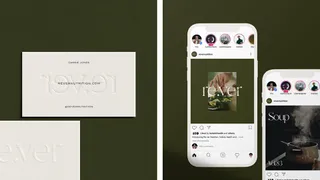
Re.ver Nutrition by MadeByShape
Carl Jung, one of the most well-renowned voices in psychoanalysis, suggested that there are twelve characters that are so well known, they’re now part of our collective unconscious.
But these characters don’t just exist within fables and popular culture; you’ll find them adopted by brands, too. They are:
The Innocent - think the joyous and lighthearted campaigns of Coca-Cola
The Rebel - the chaotic, rule-breakers of the world, e.g. Oatly or Harley Davidson
The Lover - intimate, relationship-builders such as Magnum and Lindt
The Jester - cheeky, mischievous and irreverent brands like Paddy Power
The Sage - trusted sources of truth and information - think BBC and Google
The Ruler - commanding authority, rulers have products that speak for themselves, e.g. Mercedes Benz
The Explorer - restless, adventurers such as Jeep, Airbnb and Red Bull
The Magician - imaginative visionaries the think outside the box, e.g. Apple and Disney
The Hero - brands that look to inspire others and make a positive impact, e.g. Nike
The Caregiver - selfless nurturers such as Campbell’s Soup and Pampers
The Creator - those that live to stimulate the imagination, e.g. Lego or Minecraft
The Regular Guy/Girl - down to Earth types that have a common touch, e.g. Amazon or eBay
Adding a character to your brand brief helps flesh out your core values, making you more human, well-rounded and relatable to your audience. So, it’s a creative exercise that’s well worth doing.
And, every character needs a voice… 🎤
A brand’s tone of voice and visual identity aren’t exclusive of one another; but done right, they can work harmoniously.
So even if you haven’t got your logo, typography, or colour palette locked down, take some time to look at your brand voice.
The work you’ve already completed around your archetype and values will help shape the tone; just imagine how your brand character would address the room.
But try and get more granular than that and include details around:
formality
sentence complexity
whether you use contractions or not (i.e. cannot or can’t)
and your inhouse preference over the active vs. passive voice
You could also include some sample tone of voice content within your brand brief; how this might look on the website, blog or on your social channels.
Not only will this allow anybody writing for your brand to communicate clearly and consistently, it will give any in-house design team or branding agency the context they need to work with you. It makes a designer’s job so much easier and gives them cues to create a visual language that complements your brand’s personality. Essentially, it speeds up what can often become a lengthy design process.
Of course, there’s no cookie-cutter approach to writing the perfect brief; it should be as unique and bespoke as the brand it’s designed to build. That’s why when briefing an agency, it’s important to include the project-specifics.
By now you’ve probably figured out that branding projects involve lots of moving parts. And to deliver them on time and within budget requires a thorough understanding of the specifics.
The get out of jail free card here is “ASAP”. But unfortunately, that’s not going to cut the mustard 🤷. Agencies will need to factor in resources and will need a realistic timeframe to deliver the quality of work your brand deserves.
Depending on the scope and complexity, branding projects can take between 6 and 12 weeks to complete. Obviously, this depends on where you are with your proposition and how many assets need to be created.
We don't want to waste your time, or ours. You can save time and energy for both sides if you provide your budget. From this, an agency will instantly be able to tell you that:
A) this budget is unrealistic for what you want to achieve and we can't work with you or
B) this sounds great, we'll provide a proposal for you to review.
Which puts you as a client in a much better situation moving forward either way. We can tailor deliverables and expectations early only, but you’ll never know without addressing that elephant in the room 👀.
OK, we know it’s a tricky one. But giving an agency an idea of what you’re working with will help save time for all parties. Can they realistically deliver within the constraints? If not, they might be able to produce a lighter package of assets without the full surrounding strategy.
A good way to get there is also listing out the deliverables you’re hoping to receive. For example:
Brand strategy (research, proposition and ideation)
Visual brand and tone of voice guidelines
Online assets: website, social avatars, campaign assets, etc.
Offline assets: business cards, letterheads and promotional flyers
Next, add key contact details for the main stakeholders. Assigning one contact that the agency’s project manager can contact will ensure a streamlined process. Someone that realistically has the time and capacity to deal with a project of this size. Because with so many versions of deliverables going back-and-forth and tight deadlines to meet, you don’t want lost comms to slow down the process.
If this is an official procurement process, your tender might have specific criteria that a branding agency’s proposal needs to meet. This could include things like:
Cost/Value for Money
Quality of Work
Previous Experience
Alignment to the Design Brief
Suitability of the Agency
How are these things weighted by percentage? Let them know and the agencies that are bidding can shape their response accordingly.
This is what the agency should come back to you with. Usually, it’s something like:
A proposal
Examples of previous work
Relevant client references
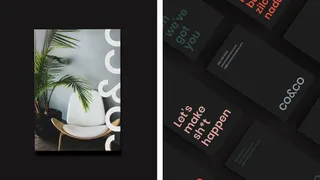
co&co by MadeByShape
Essentially, any other key details that could steer a marketing team, design agency - or anybody else who’s representing your brand - in the right direction. These could be things like:
Some brand history: what have you done to arrive here?
Some of the work and achievements you’re most proud of
Why did the founders initially get started?
Brands outside of your competitor set that you admire in terms of tone and visuals
The inhouse design style (if any visual rules and language have been created)
Because if you don’t skimp on the details, we’re pretty sure you’ll end up with a brand that dazzles - this year and for many more to come 🙌.
Whether it’s brand guidelines to swear by or alluring web designs that work just as hard for users as they do for SEO, a great brand brief can lead to magical things.
You may have already seen some snippets of our work throughout this article, but it's also great to see where they came from; after all, everyone starts from somewhere.
Here are some branding examples, showing you the before and after of a selection of logos we have created here at MadeByShape. But remember, a brand isn't just a logo. A logo is merely the full stop at the end of a conversation. Brand is everything, and everything is brand 👀
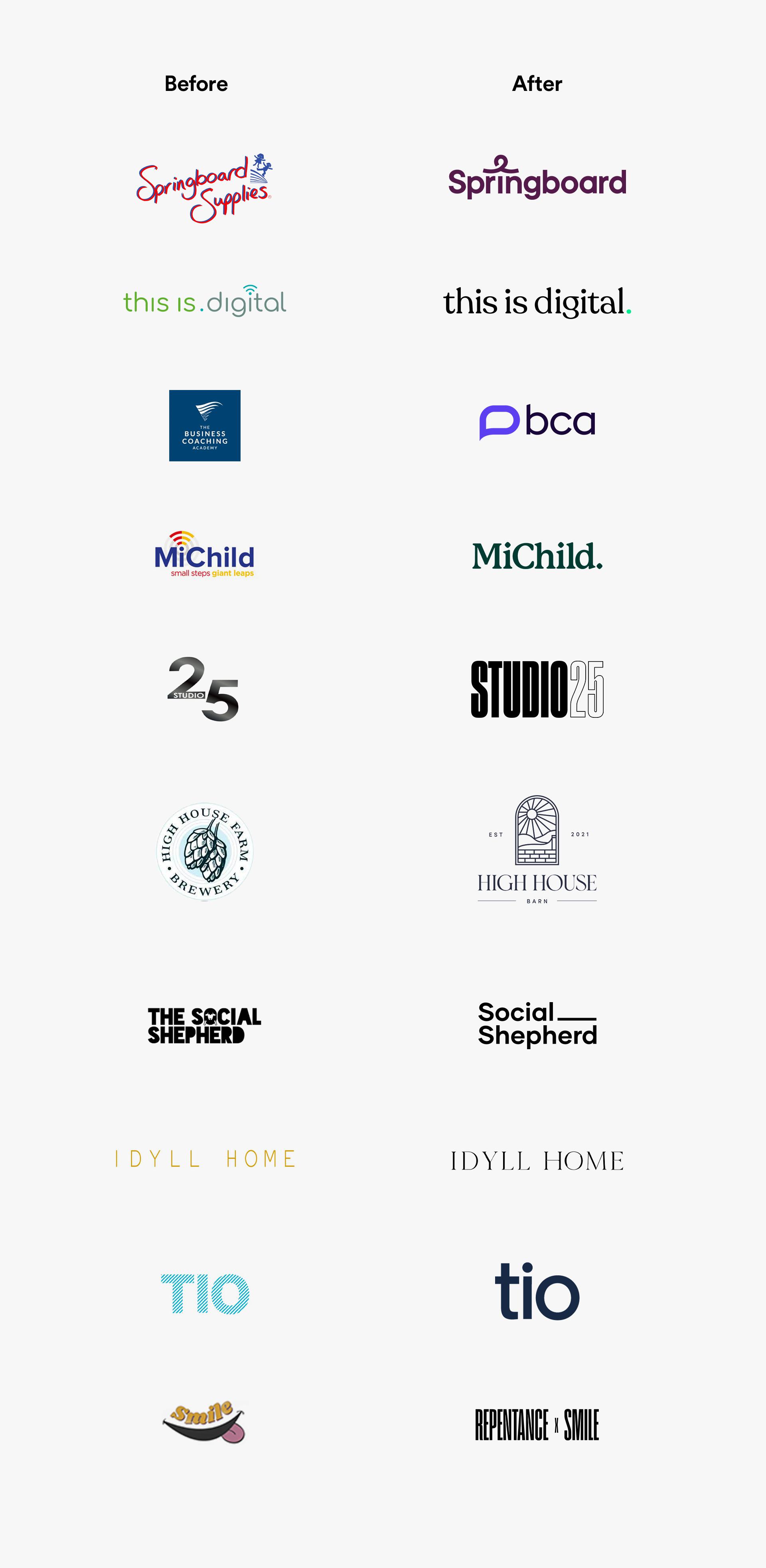
You can find more examples of how we’ve helped our clients in our agency portfolio. And guess what? They all started with a brand brief!
In order to create the most effective branding, we work with comprehensive brand brief templates every day. So click below for your free brand brief template; carefully designed to make your branding work harder for you - and your team. You're welcome 😉.
Find out more about why you should hire a branding agency and how a branding agency works in our article. We also cover the steps to finding the right brand design agency in our article Everything You Need to Know About Hiring a Branding Agency in 2022.
Are you looking for a brand agency you can trust? Get in touch to chat about your branding project today.
Download our bible-sized brief template document which will help you write a brand brief that gets you the desired results, every time.
Hiya, I'm Ella. Brand designer and serial burrito consumer at MadeByShape. My blogs are mainly about design-related things.